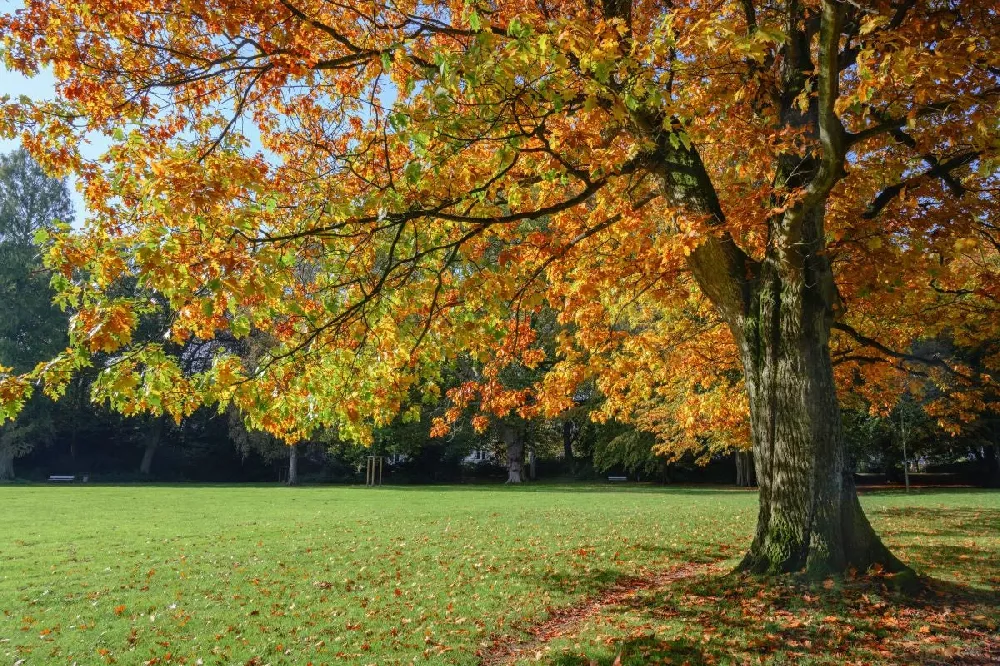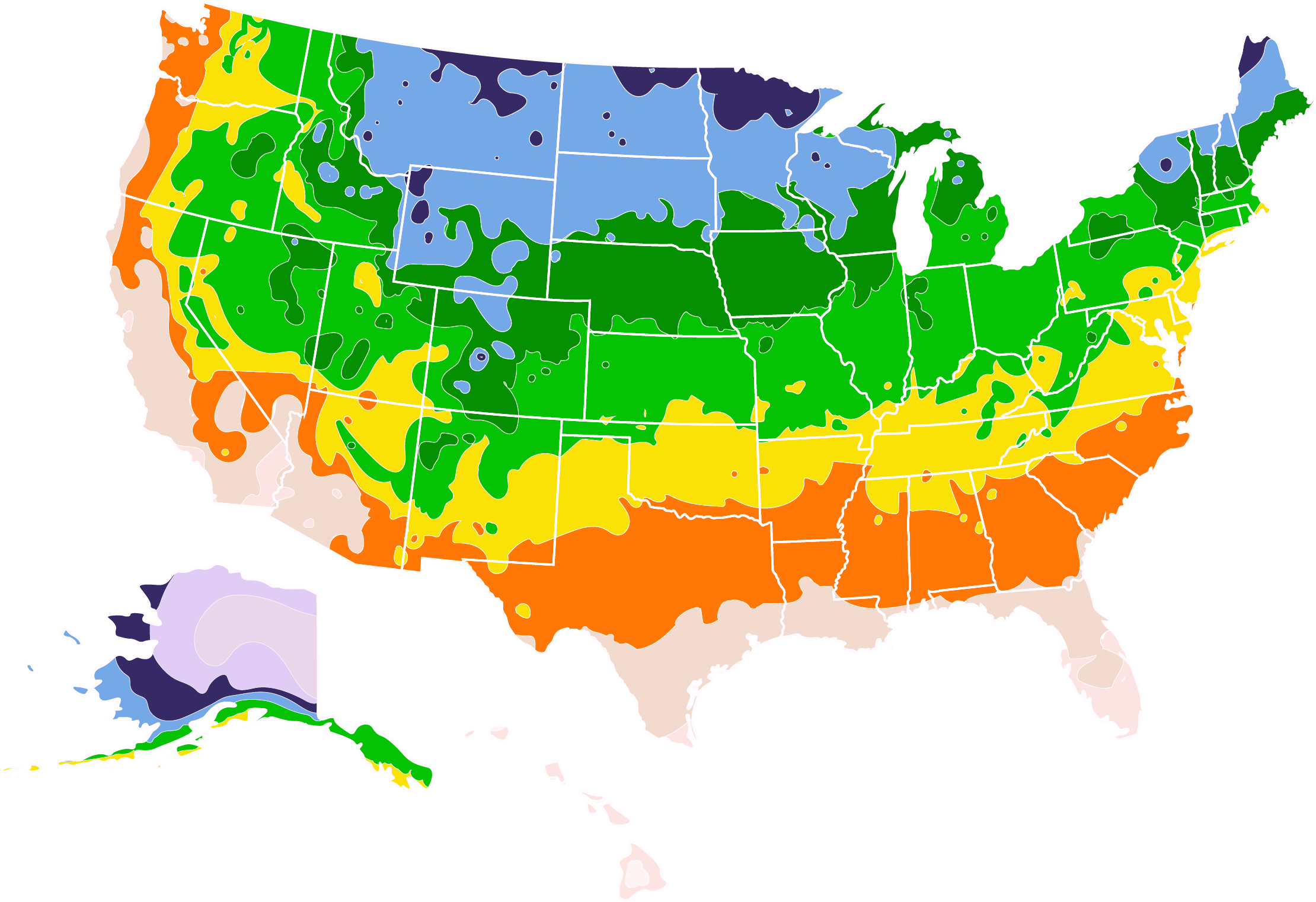- Home >
- Nut Trees >
- Northern Red Oak Trees
Northern Red Oak Trees for Sale - Buying & Growing Guide
- Ships in 1-2 days
- 1-Year Warranty Eligible
- Pots or accessories are not included unless specified in the product options.
Shipping Details:
Once your order is shipped, you’ll receive an email with a tracking number and estimated delivery date. Most orders ship immediately, but some items are seasonal and may only ship in spring or fall. These products are noted on the website.
Northern red oak is one of the best shade tree options for anyone living in the continental United States. This tree, which goes by the scientific name Quercus rubra, grows more than 70 feet tall with a spread of around 50 feet at most. That form, along with broad leaves, is what allows this tree's canopy to block sunlight so well. Here are some key characteristics of the northern red oak:
- Provides fantastic shade in the summer.
- Grows relatively fast for a large shade tree.
- Is an essential component of many ecosystems, providing animals with food and shelter.
Plant Care
Sunlight
This plant needs to receive 6 hours or more of light per day.
Watering
Generally drought-tolerant once established. Water deeply during extreme heat. Don't allow soil to become too wet.
Fertilizing
Fertilize after leaves appear with a nitrogen-rich formula.
Planting and Care
Planting instructions
Location is crucial when planting a northern red oak tree. You’ll need to find a place that has plenty of open sun exposure as well as plenty of space above and to the sides into which your tree can grow. Make sure there are no structures or utility lines that will interfere with your tree’s future growth.
After finding the right location, plant your northern red oak in the spring or fall. Dig a hole that is as deep as the root ball is tall and as twice as wide as the root ball’s width.
Watering and nutrients
Just after planting, you should give your northern red oak plenty of water to keep the soil moist. Once your tree is older, it will need very little water from you and will be able to survive moderate droughts.
Fertilize your northern red oak twice per year, once in spring and fall. Nitrogen is the nutrient that is most important to this plant’s healthy growth, so make sure that the fertilizer you use has plenty. Potassium is the next most important nutrient for this tree.
Pruning
Northern red oak is a species that responds well to pruning. When the tree is young, you can handle pruning on your own with a pair of loppers or hand pruners. In early spring, remove any branches that are dead, dying, or damaged in some other way.
When your tree gets a bit older, you should be more careful about pruning. Since this tree grows very large, its branches will eventually become more than you can handle on your own. Hire a trusted tree care team to prune any mature northern red oaks and keep them healthy.
Pests, diseases, and animals
There are many problems that can befall a northern red oak. Among the most common issues are oak wilt and root rot. However, northern red oaks can also suffer from oak leaf blister, powdery mildew, and iron chlorosis.
While some of those northern red oak afflictions have no remedy, that does not mean they are inevitable. In fact, many northern red oaks live long, healthy lives as long as they receive the right conditions and care.
Achieving maximum results
Providing the ideal soil for your northern red oak will give it the best chance of growing into the spreading shade tree you desire. The best soil for this species is acidic, somewhat sandy, and has good drainage.
FAQs
How fast does northern red oak grow?
One of the greatest benefits of northern red oak is that it is a relatively fast-growing species compared to other large shade trees. When growing in the ideal setting, this tree will grow as much as 2 feet per year. Impressively, it can maintain that rapid growth rate for a decade or more. That quick growth is why this tree is so commonly used in large-scale landscape designs for parks and golf courses.
Does northern red oak have acorns?
Like just about any other oak species, northern red oak produces acorns as its fruit. Those acorns appear in the early fall and have a distinct shape that sets them apart from the acorns of other oaks. The defining characteristics of a northern red oak acorn are a generally rounded shape with a length of around one inch and a flat cap that covers about a third or less of the acorn itself.
Are northern red oaks poisonous?
Although it is one of the most widespread trees in the U.S., northern red oak is a surprisingly dangerous plant. Nearly all parts of this tree are poisonous, including the leaves, bark, and acorns. The danger here is that northern red oak contains a toxic substance called tannin. When ingested, that toxin can harm both humans and animals.
Do northern red oaks have fall color?
In fall, northern red oak's deciduous leaves transform from green to a shade of red. At times, that shade is vibrant and can rival nearly any other tree that changes color in autumn. However, in other scenarios, the fall leaves of northern red oak can be closer to brown, which is far less impressive. But while the fall color of this tree can be hit or miss, it remains valuable for the summer shade it creates.
How is northern red oak used?
Northern red oak is an excellent plant choice for landscape designers who want to provide shade for large areas. It also works well as a street tree as it can withstand some unfavorable conditions. The wood that northern red oak produces is also an exceptionally useful material. Builders use it to create everything from cabinets to railroad ties.
Compare Similar Products
Customer Reviews
Shipping was great. Trees arrived in good condition and stood very well upon transplant. So far so good!
I bought two and they both arrived healthy. They are starting to bloom and it's very fun to watch.
Good overall experience, just pictured a few limbs and leaves, on a 6'-7' tree.
Buying was easy and fast delivery. Hopefully it's alive in the spring.
trees came in good shape. no problems










